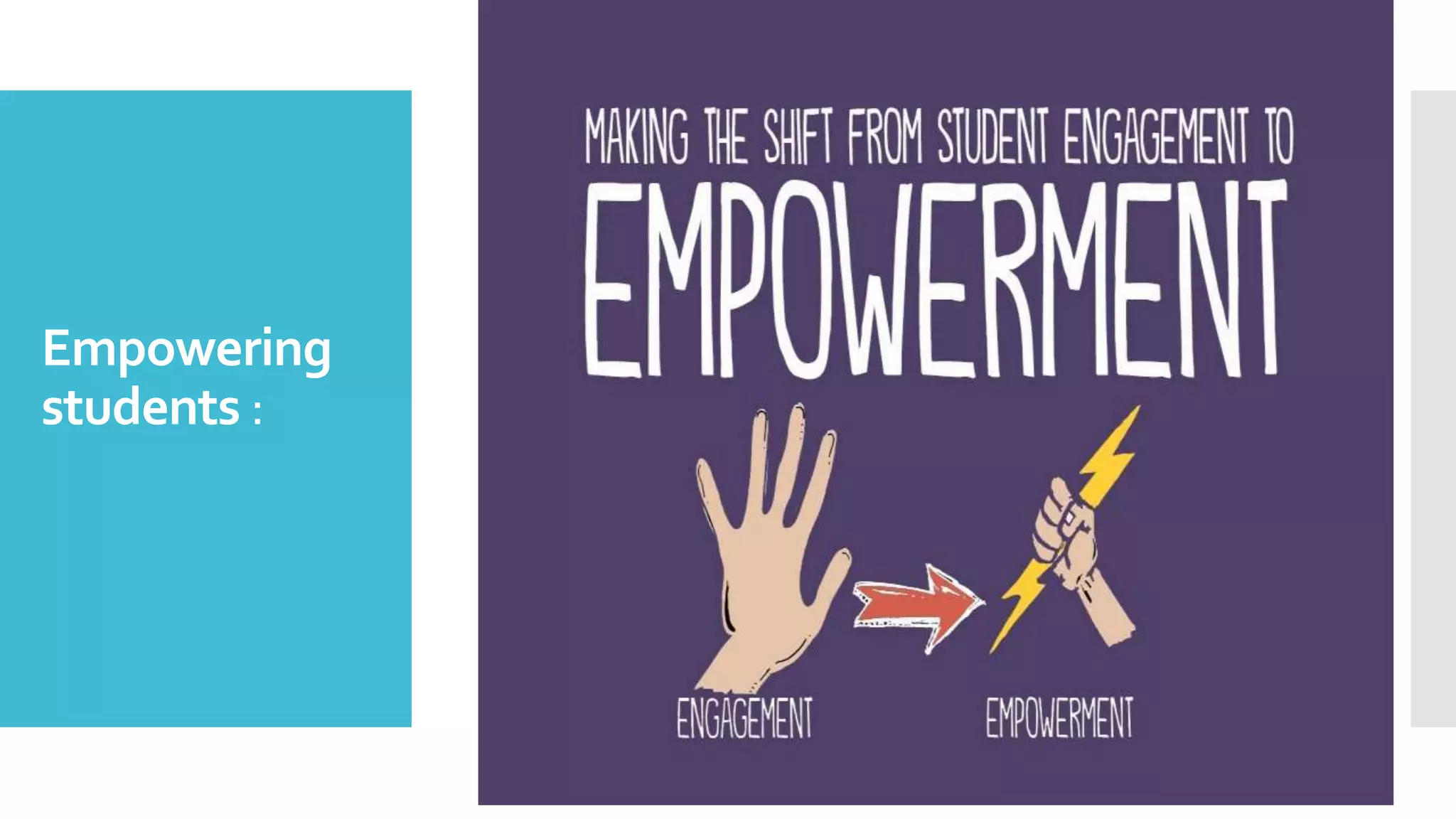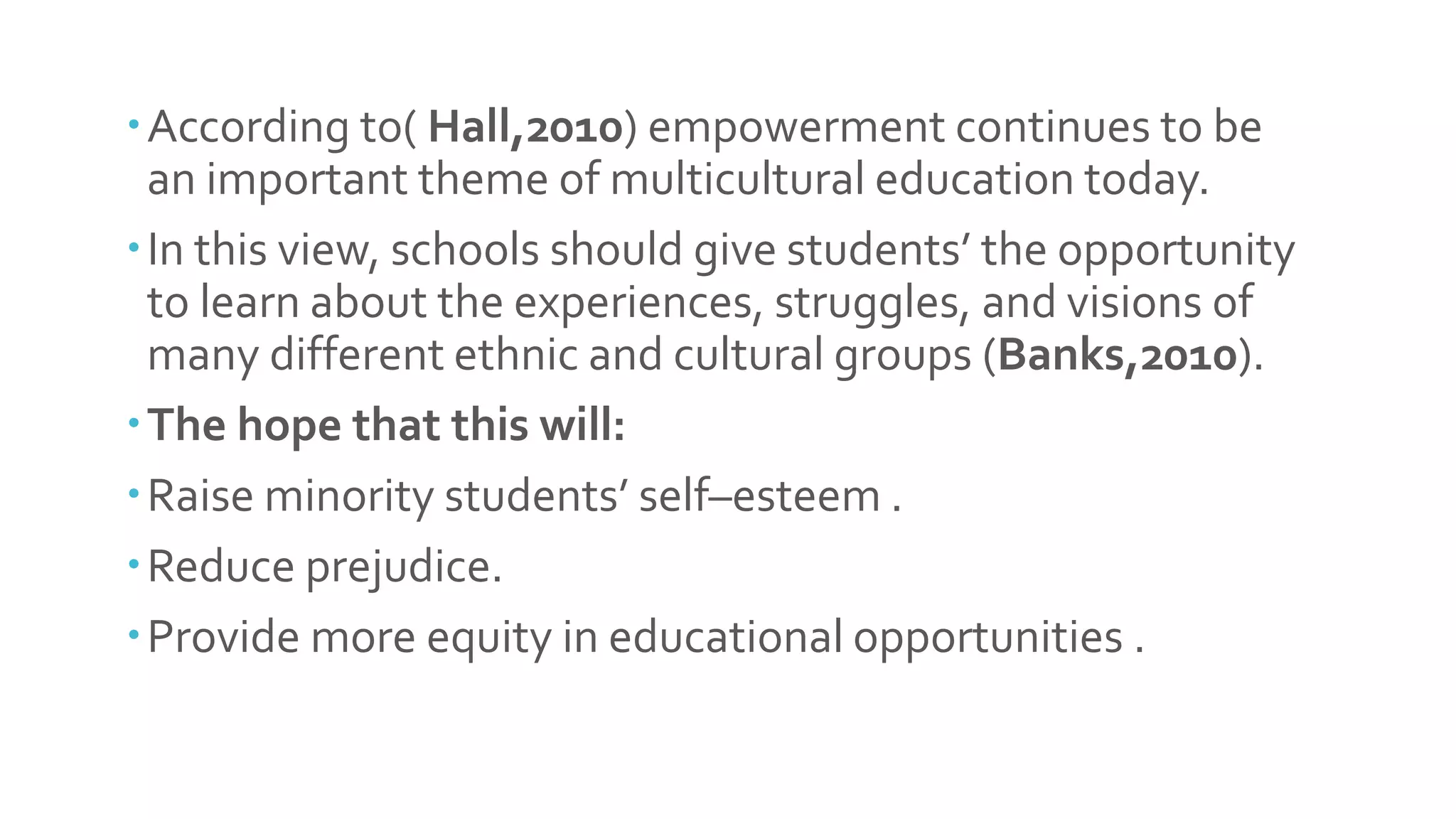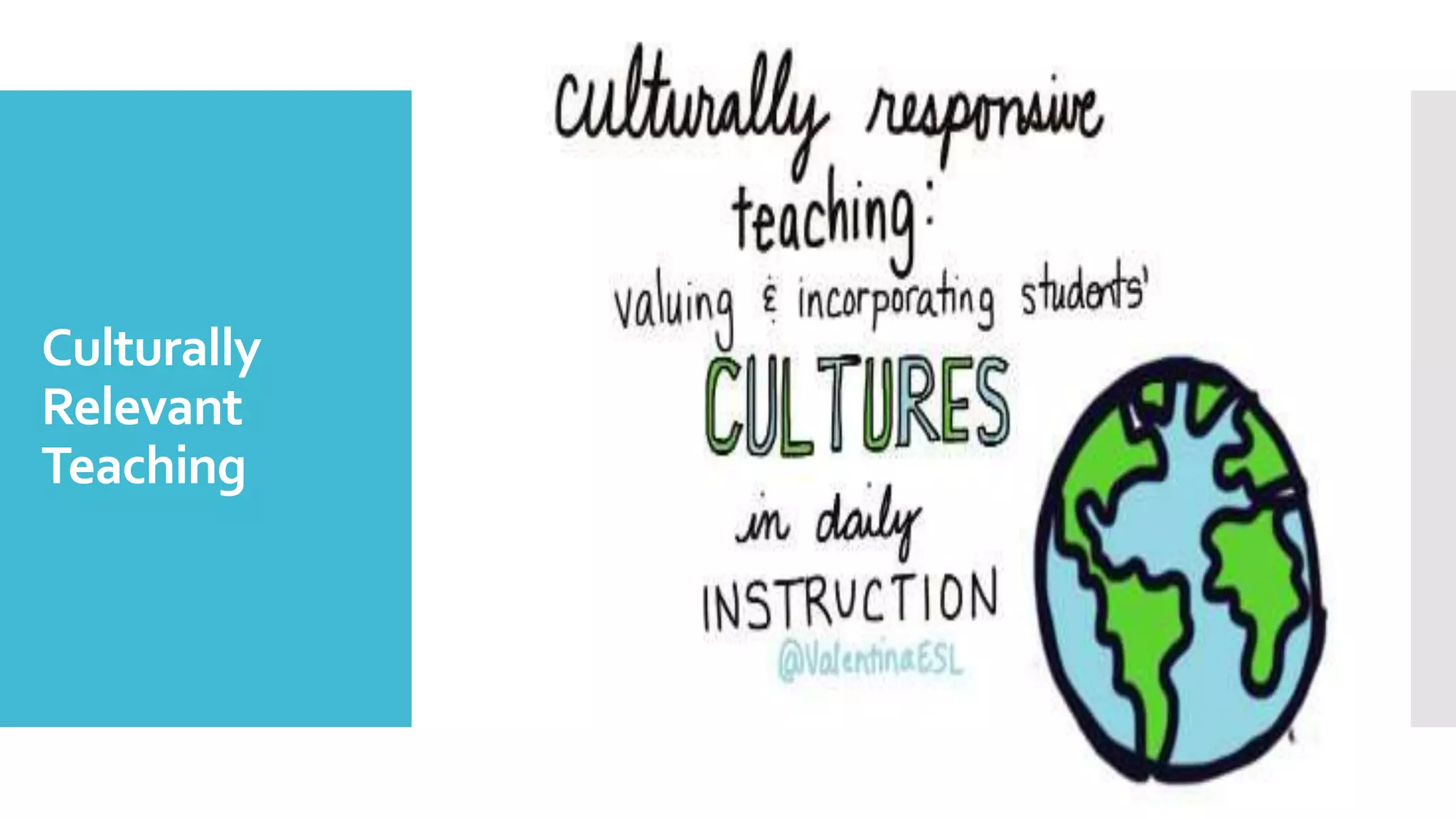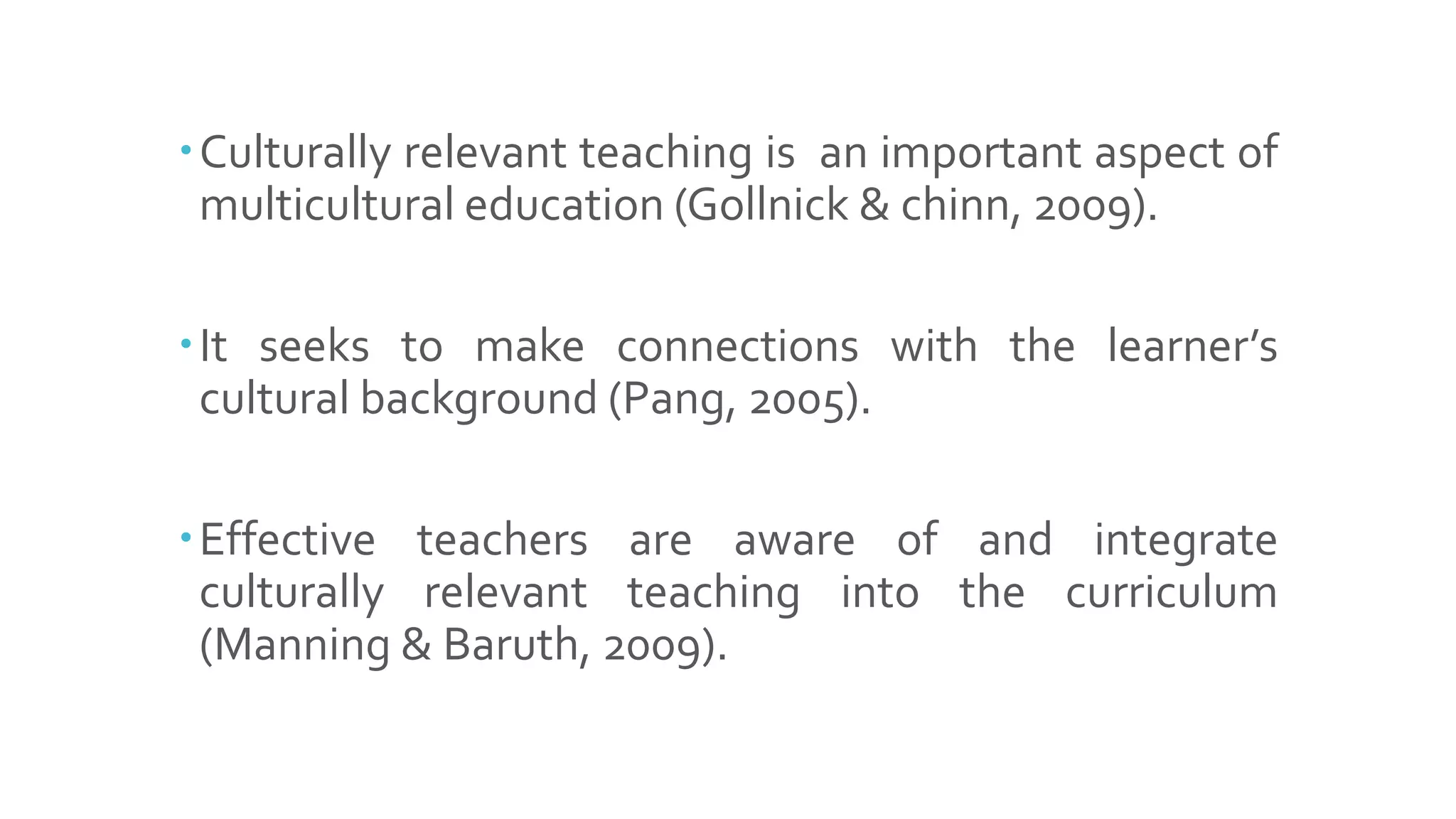This document discusses strategies for promoting multicultural education. It defines multicultural education as education that values diversity and includes perspectives from various cultural groups. Some strategies discussed include the jigsaw classroom, where students work in mixed groups to learn about different cultures and teach each other; positive personal contact, where students share personal experiences to find common ground; and perspective-taking, where students consider issues from the point of view of other cultures. The goal of these strategies is to improve relationships among students from different ethnic groups and cultural backgrounds.





























